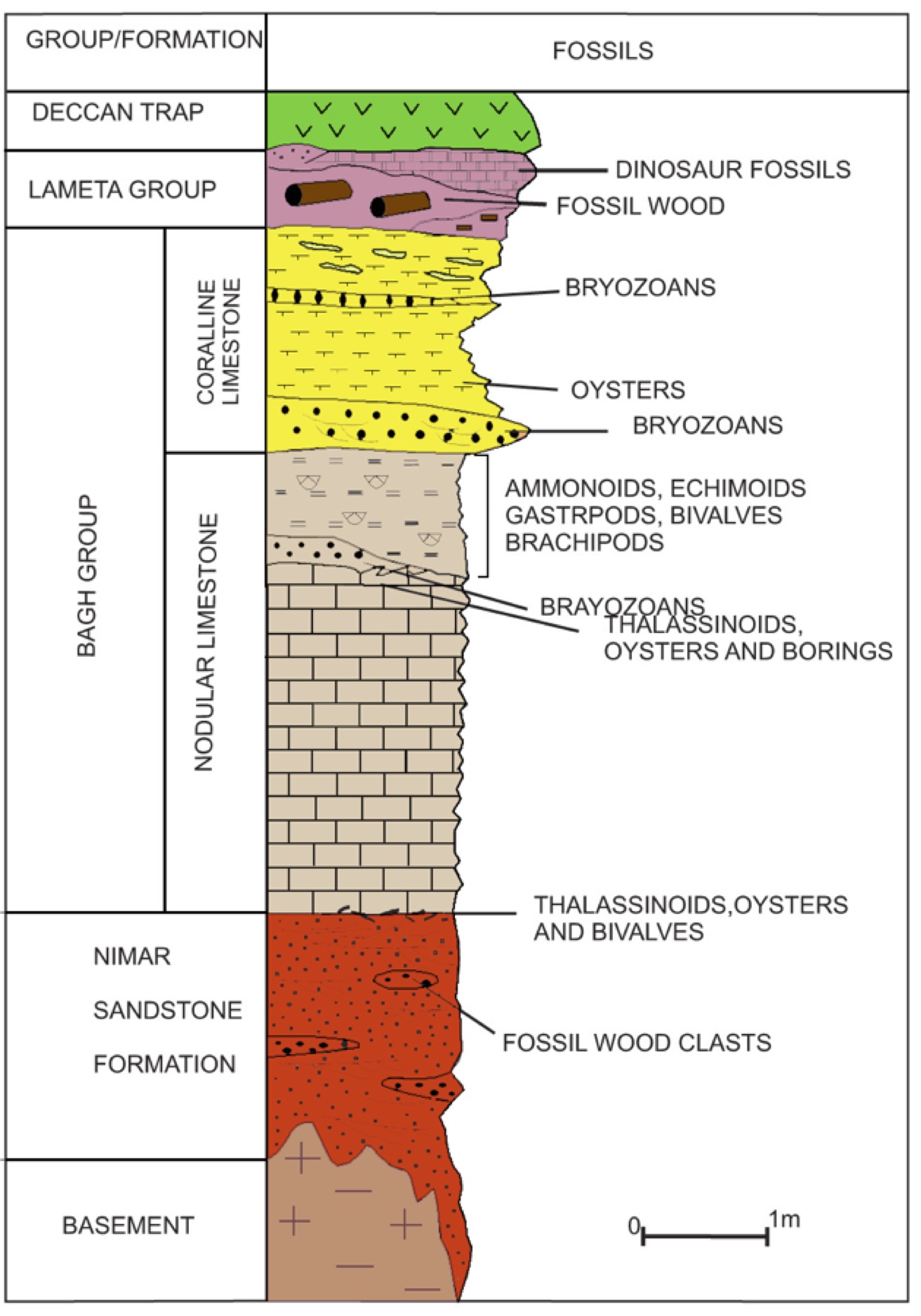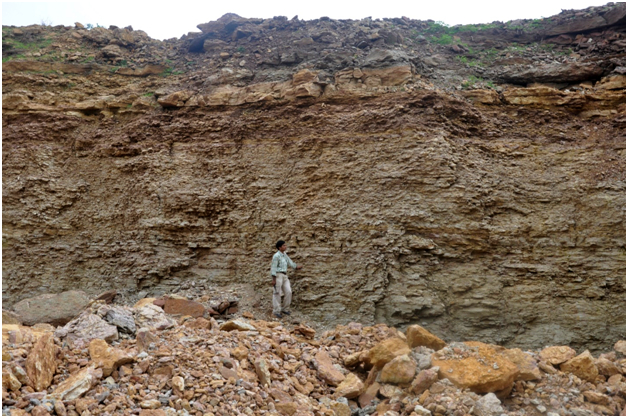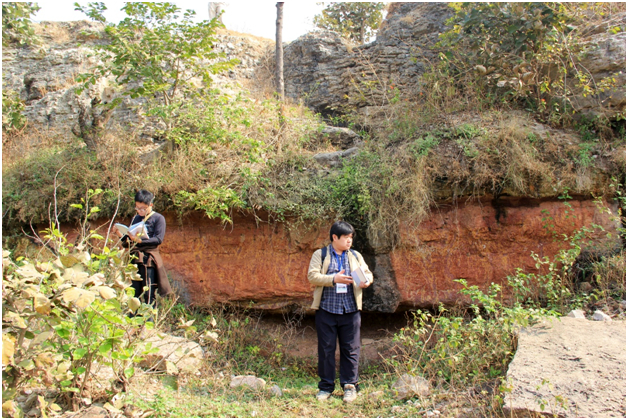Nodular Limestone Fm
Type Locality and Naming
Lower formation of the Bagh Gr. Type section is in Buddhist caves near Bagh town, Dhar, district, Madhya Pradesh. [Original Publication: Blanford, W.T. (1869) Geology of the Taptee and lower Nerbudaa Valleys. Mem. Geol. Surv. India, v.6 (3), pp.163-384; Bose, P.N. (1884) Geology of the Lower Narmada Valley between Nimavar and Kawant. Mem. Geol. Surv. India, v.21, pp.1-72.]
Reference well: Bariya nala section, Man river section.
Lithology and Thickness
Nodular limestone. Near Awaldaman, Bariya, and Rampura villages, at the base a pinkish-grey nodular bed rests over the Nimar Sandstone which occasionally has an oyster bed and Thalassinoides burrows).
The Nodular Limestone is subdivided into lower Karondia Member and upper Chirakhan Member and the two are separated by a distinct hardground. The Karondia Member consists of thinly bedded, whitish-grey nodular limestone frequently interbedded with thin marl bands that are productive for bivalves, ammonoids, gastropods, and echinoids. The Chirakhan Member is represented by nodular limestone alternated with purple to light brown marl. In comparison to the Karondia Member, the Chirakhan Member has relatively thick and friable marly bands and highly fossiliferous. According to Jaitly and Ajane (2013), the top thickest marl bed is the one identified as Chirakhan-Deola marl unit earlier by Bose (1884). Its thickness is about 5-10 m.
[Figure 0: Composite stratigraphic column of the Bagh Group (after Tripathi, 2006)]
[Figure 1: Outcrop of Deola Marl near Deora village]
[Figure 2: Quarry section exposing Nodular Limestone and Coralline Limestone at Rati Talai ]
[Figure 3: Nodular Limestone overlain by the Coralline Limestone in Bariya nala section]
Relationships and Distribution
Lower contact
Conformably overlies the Nimar Sandstone Fm.
[Figure 4: Nimar Sandstone overlain by the Nodular Limestone in Bariya nala section. On the right bottom, a block Nimar Sandstone showing abundant Thalassinoides burrows]
Upper contact
Unconformably overlain by Tirupati Sandstone Fm.
Regional extent
GeoJSON
Fossils
Rich in macroinvertebrates such as gastropods, ammonoids, bivalves, echinoids, foraminifers (Rajashekhar & Atpalkar, 1995). The presence of Prionocyclus germari in the upper part of Nodular Limestone indicates a Late Turonian age (Kennedy et al., 2003). The upper Nodular Limestone also yielded inoceramid bivalves represented by Inoceramus pedalionoides Nagao and Matsumoto,1939 (=Inoceramus heinzi and I. patootensis of Chiplonkar and Badve), Mytiloides incertus (Jimbo,1894) (=Inoceramus crippsi and Inoceramus subtrigonoidesof Chiplonkar and Badve), and Mytiloides ex gr. striatoconcentricus (Gu¨mbel, 1861–68) (=Inoceramus subsulcatus and Inoceramus lamarcki var. indicus of Chiplonkar and Badve), Mytiloides sp. aff. labiatoidiformis which also support a Late Turonian age for the upper part of the Nodular Limestone (Kennedy et al., 2003). The ammonite species Placenticeras mintoi recorded from different levels of the Nodular Limestone also favors a Late Turonian age for this formation (Jaitly & Ajane, 2013).
Age
Depositional setting
Deep water shelf conditions in the lower part and shallow water, open marine conditions in the upper part (Racey et al., 2016).
Additional Information




